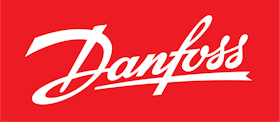Kim Fausing spotlights energy efficiency as a key tool to curb energy demand, ensure energy security and mitigate climate change, yet says it continues to be ignored in the net zero narrative.
Danfoss President and CEO Kim Fausing has called on the world’s energy and climate ministers to do more to implement and execute energy efficiency policies as a key tool to curb energy demand, ensure energy security and mitigate climate change.
Speaking at the International Energy Agency’s (IEA) 8th Annual Global Conference on Energy Efficiency in Versailles, France, Fausing reflected on the progress that has been made in the year since the conference was held in Sønderborg, Denmark, and where Sønderborg Action Plan was adopted.
Kim Fausing said: “In Sønderborg a year ago we proved beyond doubt that the value of reducing energy demand, along with increasing supply, is an essential yet overlooked component of the energy transition. And we illustrated that it’s good for business too, with most solutions having payback times of less than 3 years. In fact, Dr Fatih Birol even coined Sønderborg as The global capital of energy efficiency. This was certainly a turning point, but now is not the time to rest. Rather it is the time to implement, execute and follow up on energy efficiency and machine productivity.”
While global energy efficiency progress reached 2.2 per cent in 2022, twice the average over the previous five years, this is still far short of the necessary 4 per cent improvements needed annually for the period 2020-2030 for the world to reach the Paris Agreement climate goals. Global energy demand grew by 1 per cent in 2022. Without progress on energy efficiency, the IEA states this would have been almost three times higher.
Fausing highlighted that the momentum for building out new energy supply continues to dwarf efforts to reduce demand through energy efficiency measures and called for an updated narrative about energy efficiency. Introducing the concept of “energy efficiency 2.0”, he said it is much more than simply reducing demand and it will become even more important as the clean energy transition accelerates. The world needs digital solutions such as IoT and AI to create the flexibility that our energy systems will require as the share of renewables grow.
Fausing said: “The IEA has rightly called this decade for The decade for action. Energy efficiency 2.0 means using electrification and sector integration to use our energy smarter, matching supply and demand. We know that excess heat – from supermarkets, data centres, industry, wastewater treatment plants – in the EU corresponds to the total energy demand for hot water in residential and service sector buildings. Yet, it’s mostly unutilised. Put simply, there will be no net zero future without energy efficiency.”
Publish your content with EB Publishing
It's about who you reach. Get your news, events, jobs and thought leadership seen by those who matter to you.











